50+ Sample Sponsorship Agreements
-
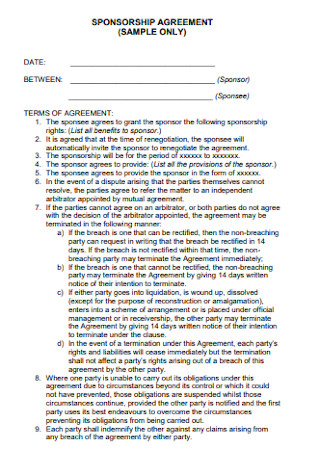
Sample Sponsorship Agreement
download now -
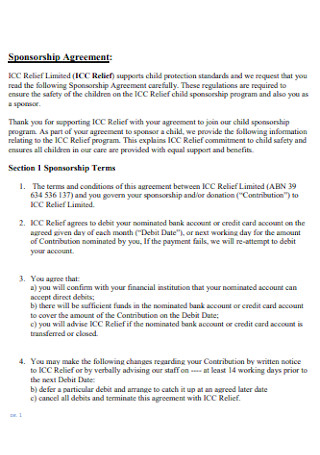
Charity Sponsorship Agreement
download now -
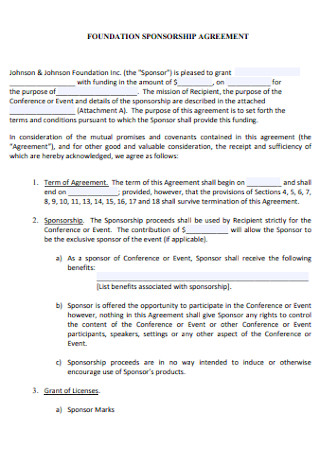
Foundation Sponsorship Agreement
download now -
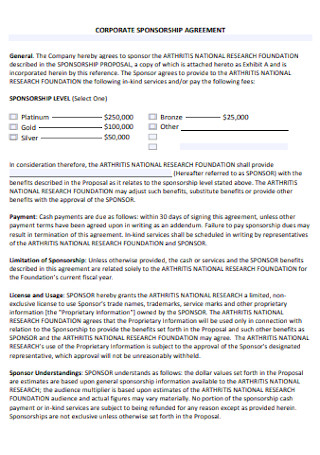
Corporate Sponsorship Agreement
download now -
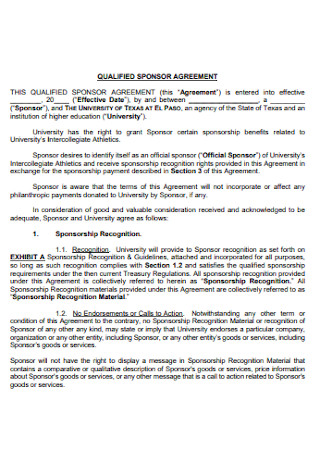
Qualifed Sponsor Agreement
download now -
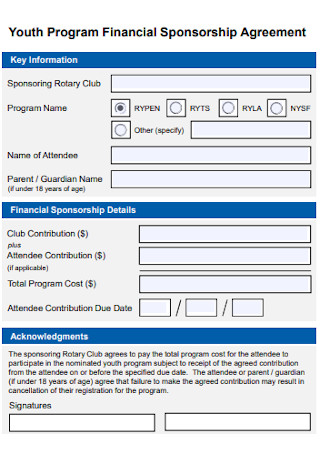
Program Financial Sponsorship Agreement
download now -
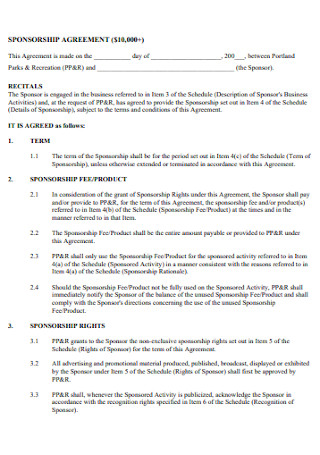
Basic Sponsorship Agreement
download now -

Chapter Sponsorship Agreement
download now -
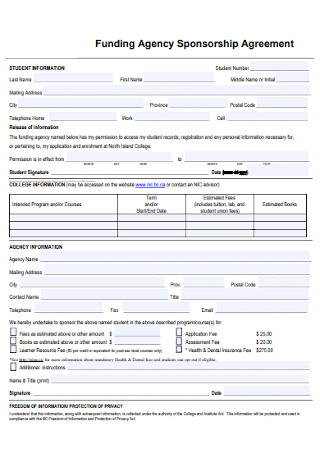
Funding Agency Sponsorship Agreement
download now -
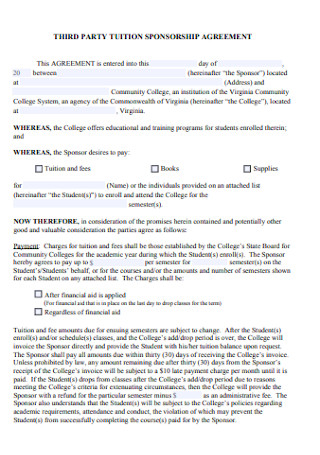
Third Party Tution Sponsorship Agreement
download now -
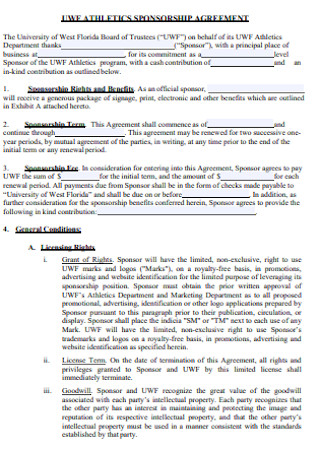
Athlectics Sponsorship Agreement
download now -
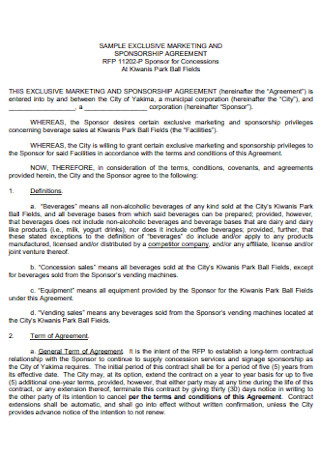
Exclusive Marketing and Sponsorship Agreement
download now -
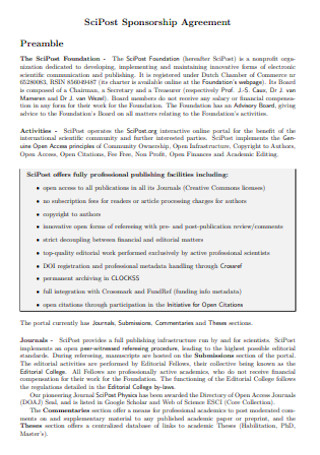
Scipost Sponsorship Agreement
download now -
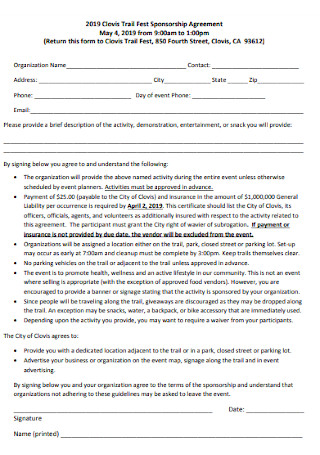
Trail Fest Sponsorship Agreement
download now -
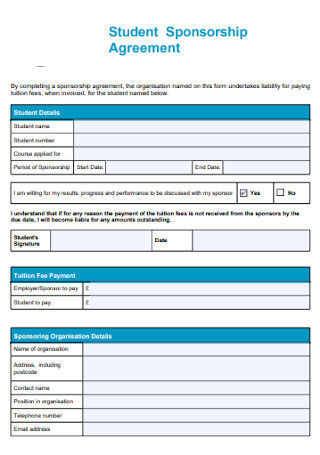
Sample Student Sponsorship Agreement
download now -
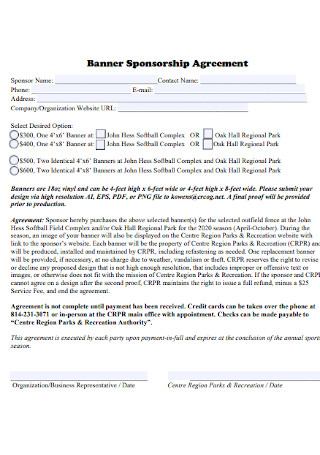
Banner Sponsorship Agreement
download now -
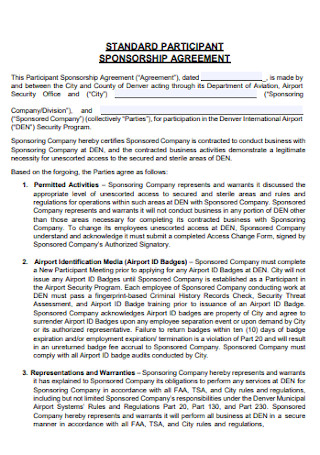
Standard Participant Sponsorship Agreement
download now -
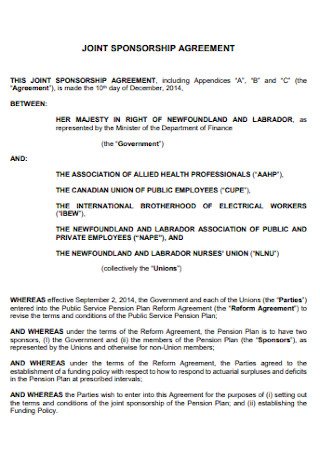
Joint Sponorship Agreement
download now -

Fiscal Sponsorship Agreement
download now -
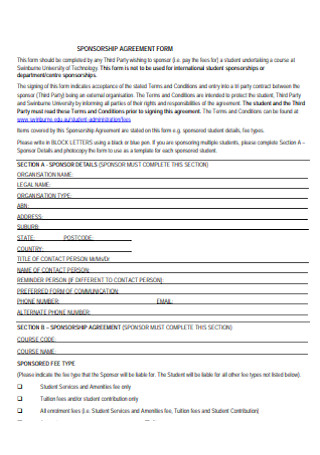
Sponsorship Agreement Form
download now -
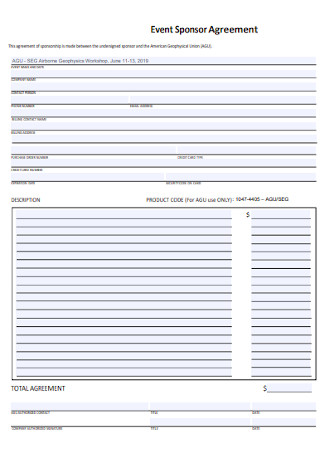
Event Sponsor Agreement
download now -
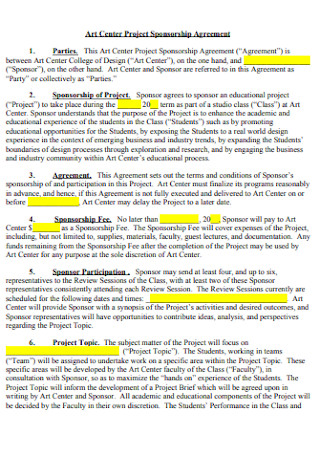
Art Center Project Sponsorship Agreement
download now -
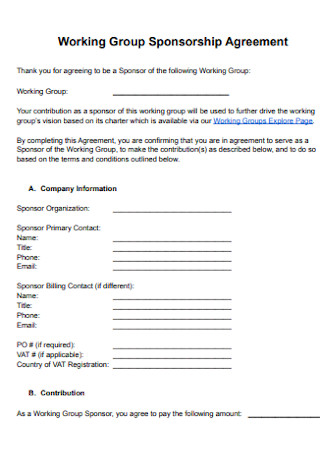
Working Group Sponsorship Agreement
download now -
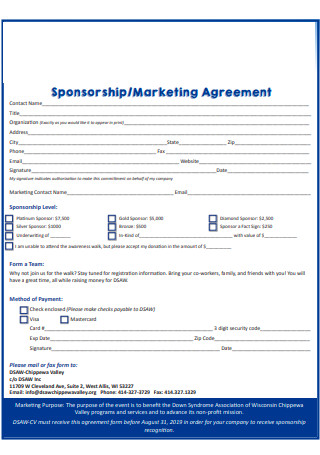
Sponsorship and Marketing Agreement
download now -
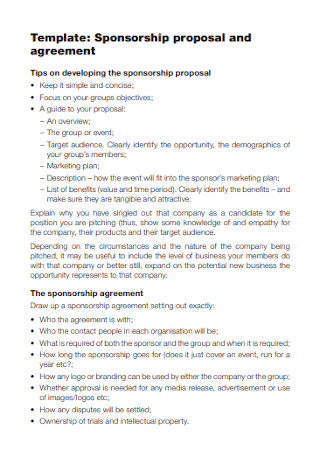
Sponsorship Proposal and Agreement
download now -
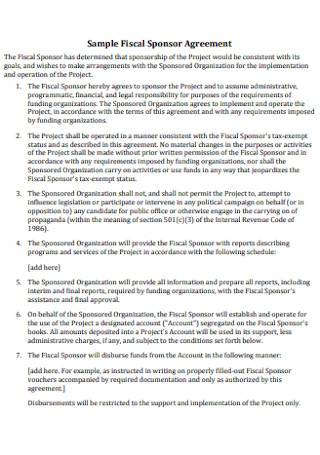
Sample Fiscal Sponsor Agreement
download now -

Sponsorship Agreement Form
download now -
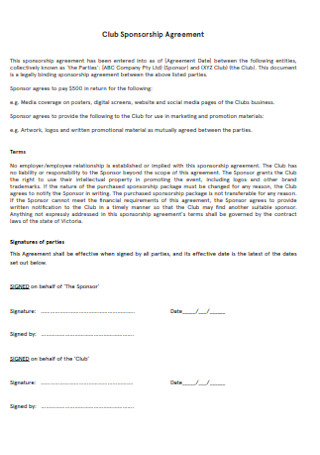
Club Sponsorship Agreement
download now -
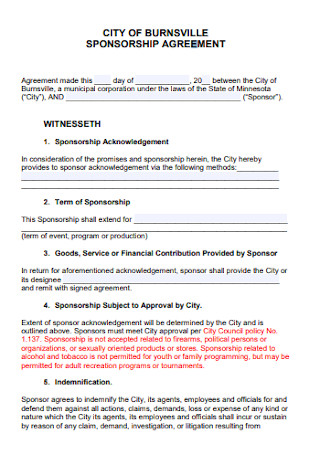
Sponsorship Acknowledgement Agreement
download now -

Sponsorship Agreement and Receipt
download now -
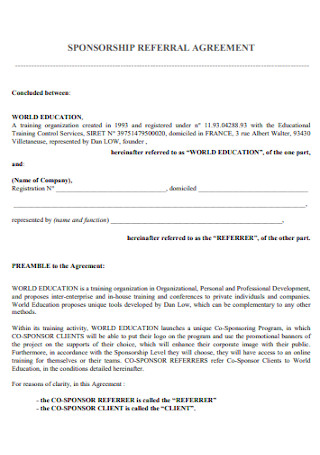
Sponsorship Referral Agreement
download now -

Underwriting Sponsorship Agreement
download now -

Sponsorship Marketing Agreement
download now -

Sponsorship Letter of Agreement
download now -

Sample Sponsorship Agreement
download now -
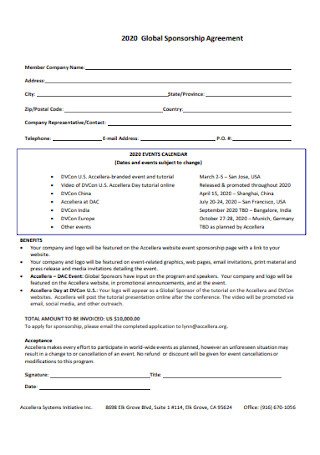
Global Sponsorship Agreement
download now -
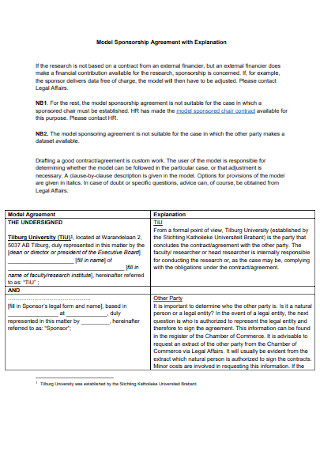
Model Sponsorship Agreement with Explanation
download now -
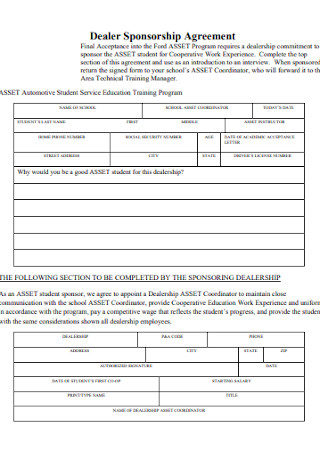
Dealer Sponsorship Agreement
download now -
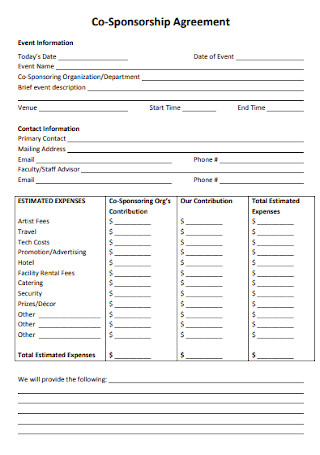
Co-Sponsorship+Agreement Format
download now -
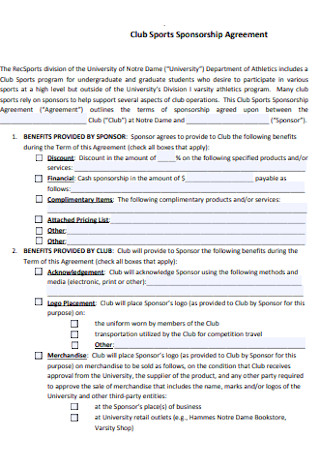
Club Sports Sponsorship Agreement
download now -
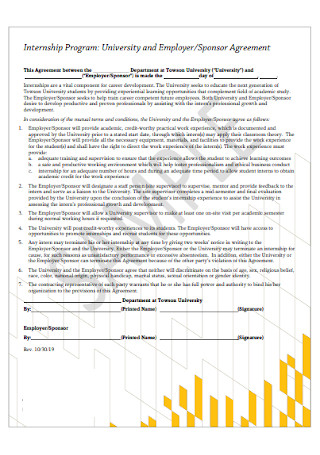
Employer and Sponsor Agreement
download now -
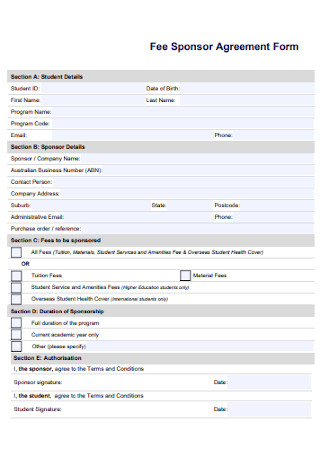
Fee Sponsor Agreement Form
download now -

Local Little League Sponsorship Agreement
download now -
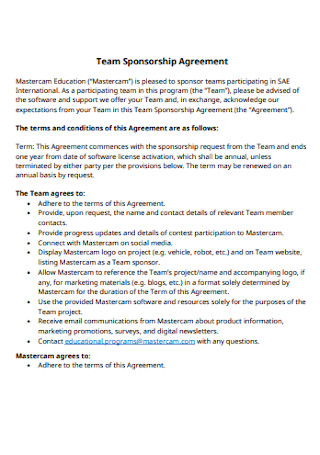
Team Sponsorship Agreement
download now -
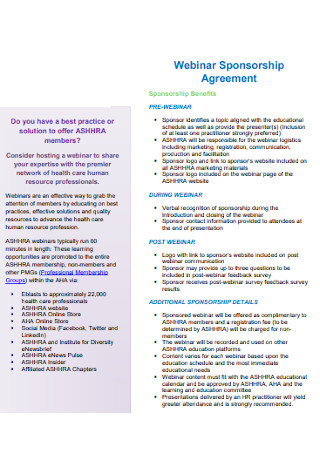
Webinar Sponsorship Agreement
download now -
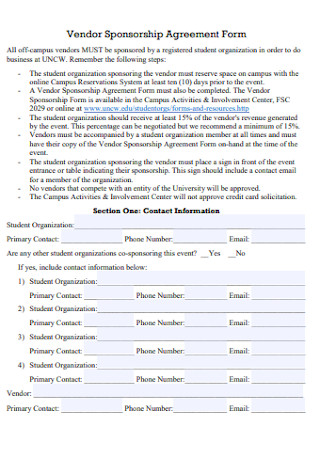
Vendor Sponsorship Agreement Form
download now -
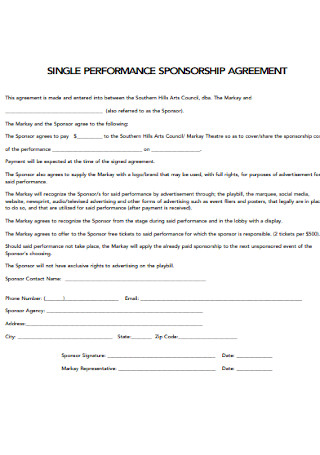
Single Performance Sponsorship Agreement
download now -
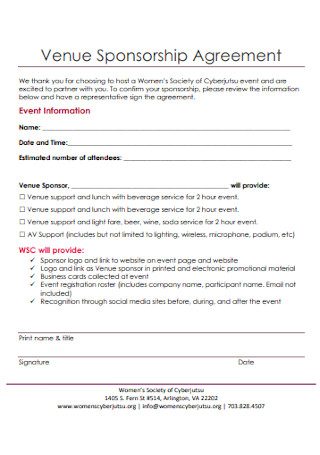
Venue Sponsorship Agreement
download now -
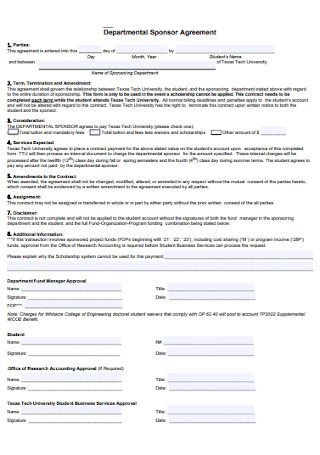
Departmental Sponsor Agreement
download now -

Outdoor Education Sponsorship Agreement
download now
FREE Sponsorship Agreement s to Download
50+ Sample Sponsorship Agreements
What Is a Sponsorship Agreement?
Key Players in a Sponsorship Agreement
Possible Sponsorship Scenarios
Tips for Getting Sponsors
How to Create a Sponsorship Agreement
FAQs
What should I look for in a sponsorship agreement?
What is an example of sponsorship?
What should I offer in return for sponsorship?
What Is a Sponsorship Agreement?
A sponsorship agreement is a written document that outlines the contract terms and conditions of a sponsor and a beneficiary or organizer. The former effectively agrees to finance the latter’s event, activity, or product on mutually agreed terms.
According to Pledge Sports, football is one of the most popular sports in the world. Dedicated fans all over the world tune in to football games so much that it has permeated every aspect of public life. So it comes as no surprise that endorsement deals and sponsorships are abundant for the world’s biggest football teams. According to the online article, the top two teams- Real Madrid and Manchester United- have accumulated sponsorships worth $220 and $209 million respectively from big brands like Chevrolet and Adidas.
Key Players in a Sponsorship Agreement
Possible Sponsorship Scenarios
In the world of marketing and branding, sponsorships can be seen everywhere. You can see it courtside at major athletic games or engraved in marble on a school building. Whatever the scenario, it’s safe to say that sponsorships act as a lifeline for a lot of people and organizations. The examples below are just some scenarios where sponsorships can clearly be seen:
Tips for Getting Sponsors
Obtaining sponsorships is not easy. It takes skillful planning and negotiation, persistent drive and above all, perseverance. In one way, it can be likened to job hunting. It takes a lot of patience and even rejections before a door of opportunity opens. However, there are ways you can improve your chances of persuading a sponsor to help your cause. It might be helpful to keep these tips in mind:
How to Create a Sponsorship Agreement
When you’ve crossed the hurdle of obtaining sponsorships, the next step is to solidify the agreement. This may take some formidable give and take and a series of negotiations. Both sponsor and organizer may contribute to the crafting of terms and conditions. Follow the easy guide below to create your own sponsorship agreement:
Step 1: Introduce the Parties
All agreements are made between two or more parties. The first step in crafting your agreement is to provide the complete details of the sponsor and organizer/beneficiary. Include the full name, complete address, and date of the agreement’s effectivity. For example, an events company throws a big launch party and its main sponsor is a well-known liquor company. The introduction section of the contract would need to include each company’s name and complete business address.
Step 2: Provide a Background
The sponsorship contract would need to contain a short description of the nature of the agreement. What is the reason for entering into the agreement? What is the central event, advocacy, or product that ties both parties? Before outlining the terms and conditions, an informative and concise introduction is required. Details include but are not limited to the name of the event, date of engagement, location, past achievements, etc.
Step 3: Outline the Benefits
Part of the terms and conditions stated in the sponsorship agreement should be the benefits of the partnership. What is inclusive of the sponsorship package? Many companies gain something in exchange for their donations and generosity. Aside from financial sponsorship, some agreements stipulate media mileage. To illustrate, exposure is of utmost importance to achieve high traffic and participation for events. For example, an event organizer may engage the media for a particular event. If the network or media outlet agrees to be one of the sponsors, the organizer may get added benefits such as coverage and other marketing advantages.
Step 4: Culminate with a Confirmation Statement
Any contract should conclude with a declaration to reaffirm the agreement. The declaration should be stated in first person with signature lines provided below it. There needs to be adequate space for the parties to sign their names, designations, and the date.
FAQs
What should I look for in a sponsorship agreement?
There are several things to take note of in a sponsorship agreement. These include length or duration of the contract, functions and responsibilities of each party, benefits of the partnership, grounds for termination, and other general terms and conditions.
What is an example of sponsorship?
The plain and obvious signs of sponsorship can be seen in sports or public arenas. Logos of well-established brands and companies can be seen on every corner and on every material. Big names such as Pepsi, Procter & Gamble, and Nike are famous brands that sponsor a lot of different events, shows, and people.
What should I offer in return for sponsorship?
In exchange for financial support, you can offer to feature the sponsor’s company logo or brand in promotions. Recognition and exposure matter. In cases such as events, participating companies and sponsors are normally given booths to advertise their services or products. Mentions and brand association is vital too, especially in the world of social media.
Sponsorship agreements are crucial in promoting clarity and accountability between parties. And you want to make sure you cover all the important areas. Still unsure of how to proceed? Download a sample template above and simply customize it to fit your needs!
